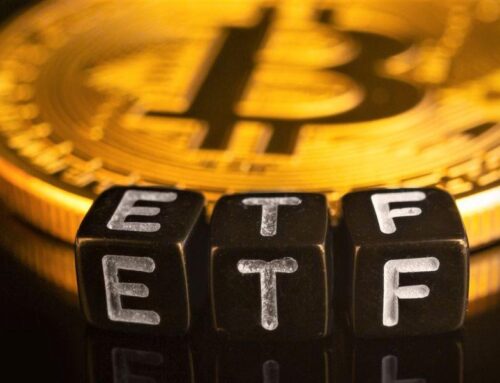Ethereum Breaks New Ground as Transaction Volume Soars
October 4, 2025
Have you ever witnessed a revolution unfold in real-time? Ethereum, the titan of blockchain, has just shattered records, hitting a staggering 1.7 million daily transactions. This explosive growth is largely attributed to the meteoric rise of decentralized finance (DeFi), which is not only redefining the digital currency realm but also challenging the very foundation of traditional finance. As we dive into this transformative moment, we’ll unpack what these elevated transaction figures mean for Ethereum and the wider cryptocurrency ecosystem, particularly how DeFi is shaping a new financial landscape.
The Engine Behind Ethereum’s Surge
Ethereum, a powerful catalyst for an array of DeFi applications, stands at the forefront of blockchain’s ongoing evolution. The recent remarkable peak of 1.7 million daily transactions underscores its significance within the crypto universe. Reports reveal that the Total Value Locked (TVL) in various DeFi initiatives has catapulted beyond crucial thresholds, reflecting surging confidence and growing interest from both retail and institutional investors alike.
This spurt in transaction activity is no mere coincidence. As DeFi protocols evolve and attract a wider audience, it becomes evident that Ethereum is not just a speculative platform; it is metamorphosing into a comprehensive financial framework that encompasses an array of real-world applications. “The record levels of network activity observed can be tied back to tangible real-world use cases, predominantly within the DeFi segment,” remarked a leading analyst.
High Transaction Volumes and Their Ripple Effects
What does this unprecedented spike in Ethereum transactions signify? It marks a clear shift toward the acceptance of decentralized finance as a powerful alternative to conventional financial systems, with Ethereum at its core. This transformation also signals a turning point toward practicality, setting off significant movements in other cryptocurrencies closely tied to Ethereum’s narrative.
However, this increased transaction volume doesn’t come without challenges. As Ethereum’s standing rises, businesses intertwining cryptocurrency with traditional payment systems face the daunting task of navigating an intricate regulatory environment. The challenge of balancing decentralized transparency with compliance measures presents a complex dilemma for innovators in this space.
DeFi: The Powerhouse Fueling Ethereum’s Ascent
At the very heart of Ethereum’s transaction boom lies the thriving domain of decentralized finance. Users, eager for alternatives to traditional financial offerings, are flocking to this sector, which provides functionalities ranging from lending and borrowing to yield farming. The surging demand for stablecoins, especially Tether (USDT), is critical to this vigorous activity.
In a stunning revelation, Ethereum facilitated $532.3 billion in USDT transfers in just one month, with an impressive 11.2 million transactions executed. Such figures not only illustrate Ethereum’s unparalleled capacity and dependability but also underscore users’ readiness to engage with a secure and versatile ecosystem, adapting seamlessly even amid fluctuating transaction charges.
Rising Tides in a Competitive Landscape
As the battle intensifies, Ethereum finds itself in fierce competition with other blockchain platforms, notably Tron and Solana. Nevertheless, Ethereum’s lead remains intact, consistently outpacing Tron in USDT transactions and attesting to the robustness of its DeFi ecosystem. Recent evaluations reveal that weekly USDT transfers on Ethereum surpassed those on its rivals, reaffirming its dominance in the stablecoin arena.
Moreover, the influx of institutional investors enhances Ethereum’s market credibility. Endorsements from established financial institutions not only infuse vital liquidity but also bolster the legitimacy of stablecoins and DeFi frameworks, pushing them toward broader acceptance.
Yet, with every silver lining comes its set of clouds. The optimistic growth trajectory of Ethereum is accompanied by inherent risks. Regulatory scrutiny is poised to be a decisive factor affecting the market dynamics. With Ethereum expanding, we may soon witness more stringent guidelines that could complicate operations for emerging players within this ecosystem.
Additionally, decentralized autonomous organizations (DAOs) and new crypto ventures must prioritize liquidity management and operational efficiency. The swift expansion of the Ethereum network unveils potential vulnerabilities that must be meticulously addressed to ensure long-term success.
A New Era for Finance
The unprecedented surge in Ethereum’s transaction volume signals a new chapter in both cryptocurrency and financial paradigms. Primarily catalyzed by the upsurge in decentralized finance, it underscores Ethereum’s pivotal role as a cornerstone of a resilient digital economy. While hurdles remain—particularly surrounding regulatory compliance and operational strategies—Ethereum’s innate strength and adaptability continue to carve pathways for groundbreaking financial solutions that could redefine our understanding of currency in a decentralized era.
As we stand at this crossroads, it is crucial to recognize that Ethereum is not simply a passenger on the cryptocurrency express; it is the engineer, steering us toward a future where finance takes on an entirely new meaning.
Search
RECENT PRESS RELEASES
Related Post



